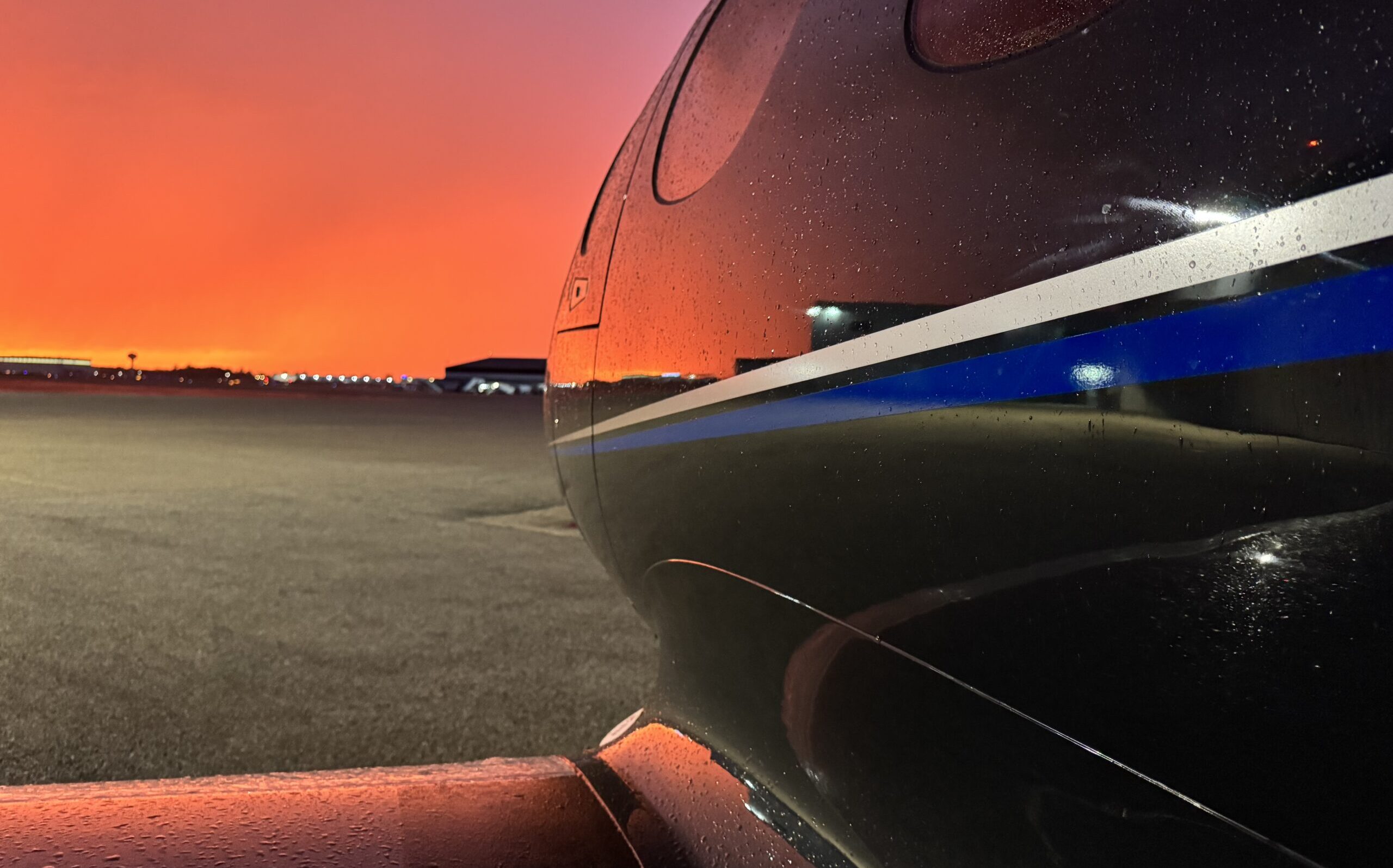Night Flying Preparedness: Safety Tips for Pilots
Night flying is a special privilege that we, as pilots, get to enjoy. The temperatures are cooler, the air is smoother, and ATC radios are often quieter than during the day. It’s no wonder pilots look forward to the time of year when we don’t have to stay awake until midnight just to enjoy a little night air.
As the clocks fall back and daylight hours shrink, it’s a great time to review why night flying feels different—and what special preflight considerations help keep safety a top priority.
Why Night Flying Feels Different
Even though the aircraft handles the same, the environment changes dramatically once the sun sets. We deal with reduced visual cues—that once-familiar pond on downwind may disappear into darkness, or bright lights can distort your depth perception.
Obstacles and traffic, while illuminated, can take longer to identify in lower light. To overcome this, take extra time to scan for traffic and evaluate the airport environment before and during your flight.
Preflight Considerations for Night Flying
1. Aircraft and Airport Lights
Aircraft position lights must be illuminated between sunset and sunrise, and a landing light is required for all flights for hire. Ensure that interior lighting is operational and adjusted for your environment.
Check the Chart Supplement for lighting information at your departure and destination airports—understand the lighting types, how to activate them, and review any relevant NOTAMs.
2. Weather
Night VFR flight relies heavily on visibility. A moonless night can look surprisingly similar to instrument meteorological conditions (IMC). Consider your IFR proficiency and route of flight carefully.
Remember, weather minimums differ at night—for example, in Class G airspace below 1,200 feet AGL, visibility requirements increase from 1 to 3 statute miles, with additional cloud clearance requirements.
3. Personal Readiness
Night flights often happen after a full day of work or activity, so fatigue is a major factor. Review your IMSAFE checklist, emphasizing fatigue.
Bring extra night equipment—flashlights and spare batteries—and ensure you’re current under FAR 61.57, which requires three night takeoffs and landings to a full stop in the past 90 days to carry passengers.
4. Flight Planning
Under FAR 91.151, night VFR flights require a 45-minute fuel reserve, compared to the 30-minute reserve required during the day.
Final Thoughts
Night flying offers some of the most beautiful and peaceful experiences in aviation. To keep it that way, focus on preparation, proficiency, and awareness as the days grow shorter. Refresh your night flying skills, stay sharp, and enjoy those calm, clear evenings aloft.
This post was written by Ashley Paulus, our Flight Instructor, CSIP and SF50 pilot based out of our Lunken facility.
